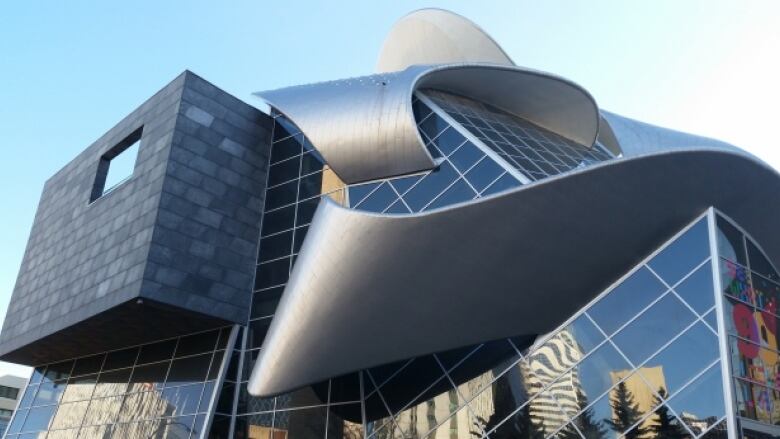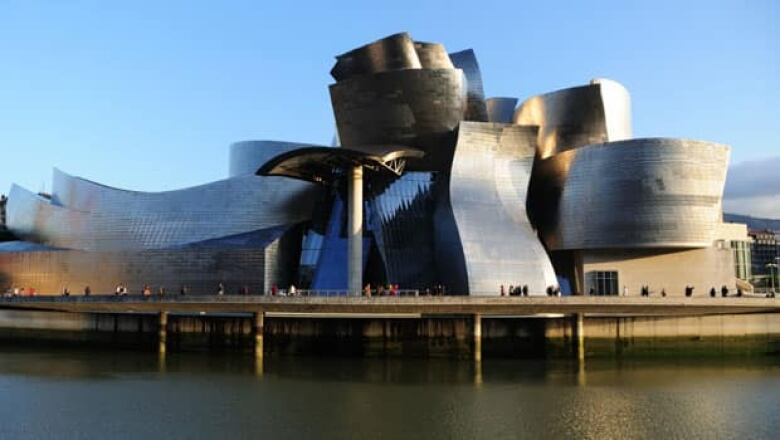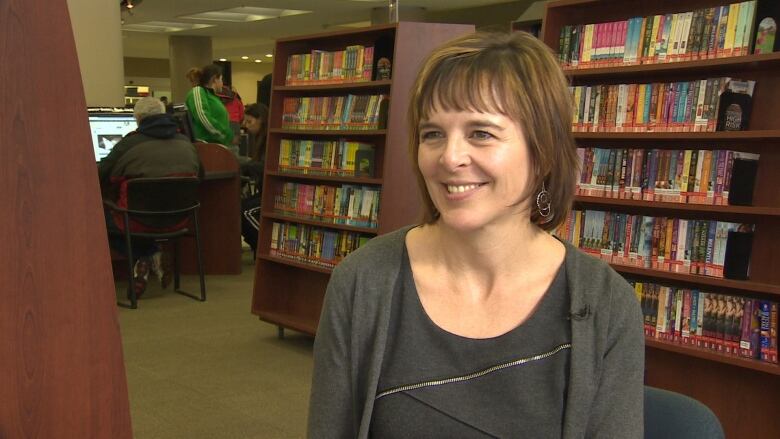Art Gallery of Alberta considers bold step to boost dwindling attendance
$88-million building sees operating costs double, even as visitor numbers taper off

When the Guggenheim Museum of Contemporary Art opened in 1997 in Bilbao, Spain, it astounded the world with its one-of-a-kind architecture. But more than that, the building became a means of urban and economic revival in an area that had suffered slow decline.
The titanium waves and limestone walls became an immediate icon, and the idea thatstunning buildings could create instant tourist destinations became known as the Bilbao effect.
The Art Gallery of Alberta's signature ribbons of steel, reminiscent of Spain's famous art museum, were designed by architect Randall Stout, a former associate of Frank Gehry, the man behind the Guggenheim.
Edmonton was hoping for its own Bilbao effect.
When the new AGA was first conceived, it was to be the final step on a road to financial sustainability, a means of attracting visitors to Edmonton's art district, and "an architecturally significant home for visual culture."
So far, it has fallen short of that vision. But it's about to undergo a renaissance that could take it the rest of the way. Part of that plan? Make the gallery free for everyone.
The other Guggenheim effect
The gallery opened its new $88-million building only five years ago. Since then, operating costs have more than doubled, even as attendance has tapered off.
It was to be expected, according to executive director Catherine Crowston. She describes a different "Guggenheim effect" at play. It goes something like this: build it, and they will come at first.
"There's huge attendance in your first and second year and then it kind of levels off after that," Crowston said.

Compare that to the 238 daily visits the year the gallery opened, or even the 188 people who visited the original gallery building each day in 2004, the year the gallery formalized plans to build a new home.
Crowston said the gallery anticipated the drop in attendance. After all, even the Spanish icon experienced the same drop off.
While many people come to see the building, not all actually walk in the door.
"We see a lot of people taking pictures outside the building and not coming in," she said.
One big gambit
The AGA has devised a plan to change that and become more financially sustainable. But it includes one big gambit opening the doors for free.
On free-admission days between August and October, gallery attendance jumped as high as 589. On Canada Day, 5,052 people visited the gallery for free.
Crowston said the more people who visit, the more relevant the gallery becomes.
"The more people who care about and are connected to the gallery, there's opportunities for us to be financially sustainable through that," she said.
The AGA can expect to lose more than $200,000 in admissions under its new plan. Crowston said the cost will be partially offset if the crowds spend money at the gallery's restaurant and gift shop.
At the moment, the AGA gift shop is projected to end the year with a $30,000 loss. Under the new strategy, the gallery hopes to see the admissions quadruple by 2020, and anticipates gift store profits to rise to more than $150,000 as a result.
The gallery's goals differ little from those in 2004, when then-executive director Tony Lupino sold the idea for a new gallery in his four-year strategic plan.
'Not sustainable in its current form'
He wrote the Edmonton Art Gallery, as it was called then, was "not sustainable in its current form."
The gallery couldn't attract exhibits or patrons, and it could no longer look to city council for more operating funds.
Around this time, the aging building was falling apart. In 2001, a small piece of the ceiling fell on a camera crew filming inside.

That's when artist Keith Turnbull was working at the Stanley Milner Library across Churchill Square. As a sculptor and art lover, he spent a great deal of time at the gallery.
"You could actually see frost on the walls sometimes," Turnbull said.
The gallery could no longer bring certain exhibits to the city, he said. It was one reason a new building was so desperately needed.
The gallery called for changes to the brand, marketing and communications, as well as "improvements in visitor experience." The "final achievement" was to be the opening of the new gallery.
Today, the new space has allowed world-class works to come to Edmonton. But the operating costs proved to be more than the gallery expected.
Crowston said the gallery made educated budget estimates before moving in, but didn't fully realize the extent of the upkeep until moving in.
"We hadn't anticipated, really, that in building such a distinct piece of architecture with all of the glass, that our window cleaning costs would be so high," she said.
After three years of budget deficits, the city agreed to invest $1.1 million in emergency funds into the AGA in 2012. Council pledged another cash injection in 2013, on the condition the gallery came up with a more sustainable plan.
Closing the funding gap
"They discovered there is and was a funding gap," said Paul Moulton, the outgoing executive director of the Edmonton Arts Council, the organization responsible for delivering arts grants on behalf of the city.
This year, the gallery is projected to fall short of nearly every revenue target in its budget.
The AGA has still managed to post modest budget surpluses by cutting back, and with significant help throughadditional grants from the EAC totalling $1.15 million since 2013.
This month, Moulton told council the gallery needed another $250,000 each year for the next three years to implement its plan to entice more people into the gallery.
The request was denied. Still, the gallery will move ahead with its plans.

Library CEO Pilar Martinez said there was an immediate 40 per cent uptake in memberships.
"That was proof that it really was a barrier to accessing library services," Martinez said.
The library was able to continue its free membership program without additional funding from city council. Total memberships have now risen to 57 per cent.
Reducing barriers a good thing
Martinez said she liked the idea of another free institution downtown, just across the square from the library.
"Anything that we can do to reduce barriers and encourage people to experience arts and culture is a good thing," she said.
But the gallery faces difficult times ahead. The economic downturn could make fundraising more difficult, additional city council funding will stop next year, and provincial grants are declining.
The gallery must also start putting money away to maintain its new building.

"Really, now it has to be on the revenue side, which means engaging more people, engaging more corporations," he said.
Still, Crowston is optimistic. She said the gallery is always actively fundraising. Despite financial challenges, the gallery has found significant savings and, with the help of municipal grants, has avoided deficits for the last few years.
If the AGA can find the funding, it will offer free admission to the public.
The plan calls for 400,000 people to visit the gallery in 2020. If it works, the gallery may see its original goal fulfilled, and Edmonton will finally have a Guggenheim of its own.
It just needs to get people through the door.












_(720p).jpg)


 OFFICIAL HD MUSIC VIDEO.jpg)
.jpg)



























































































